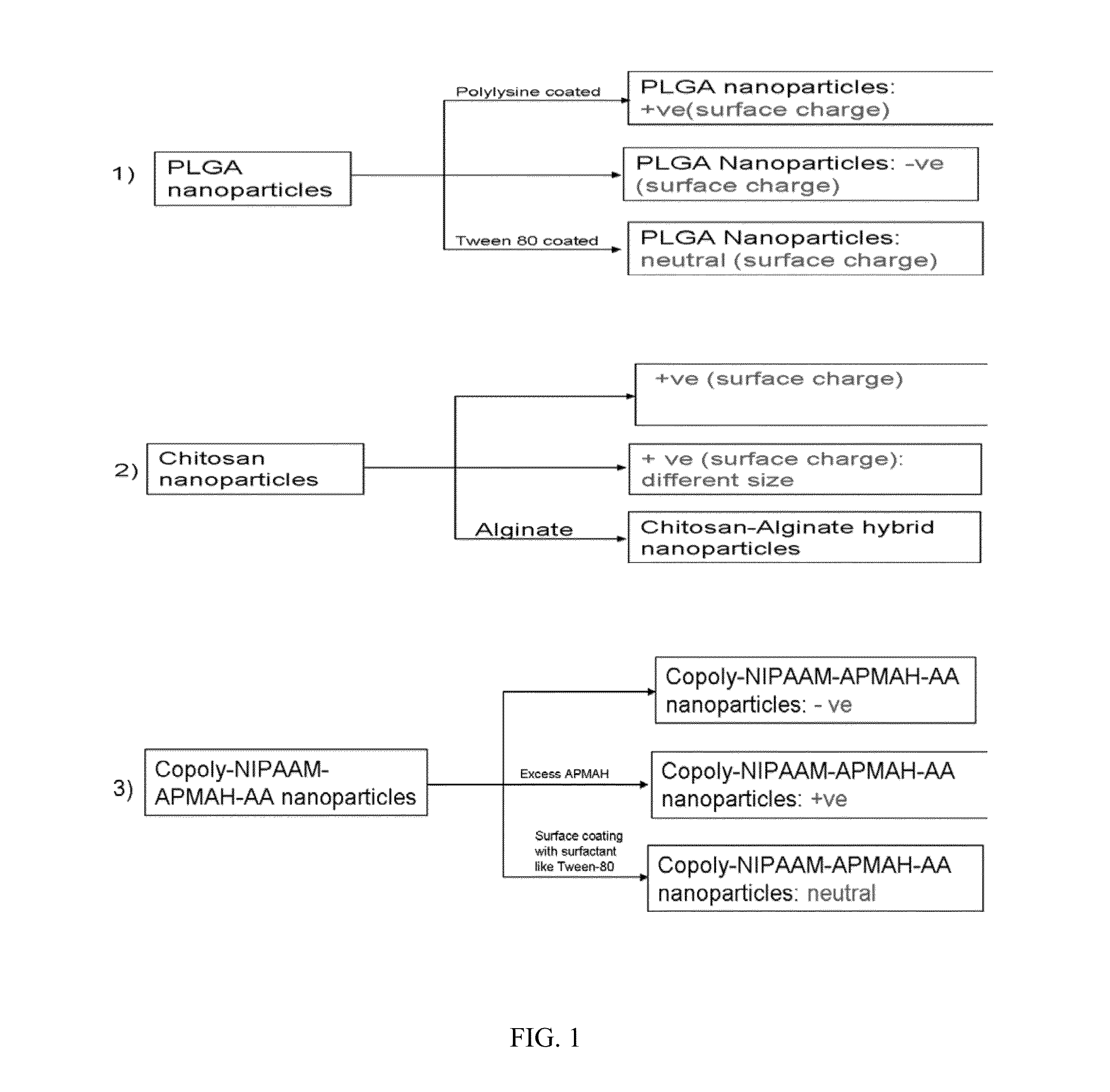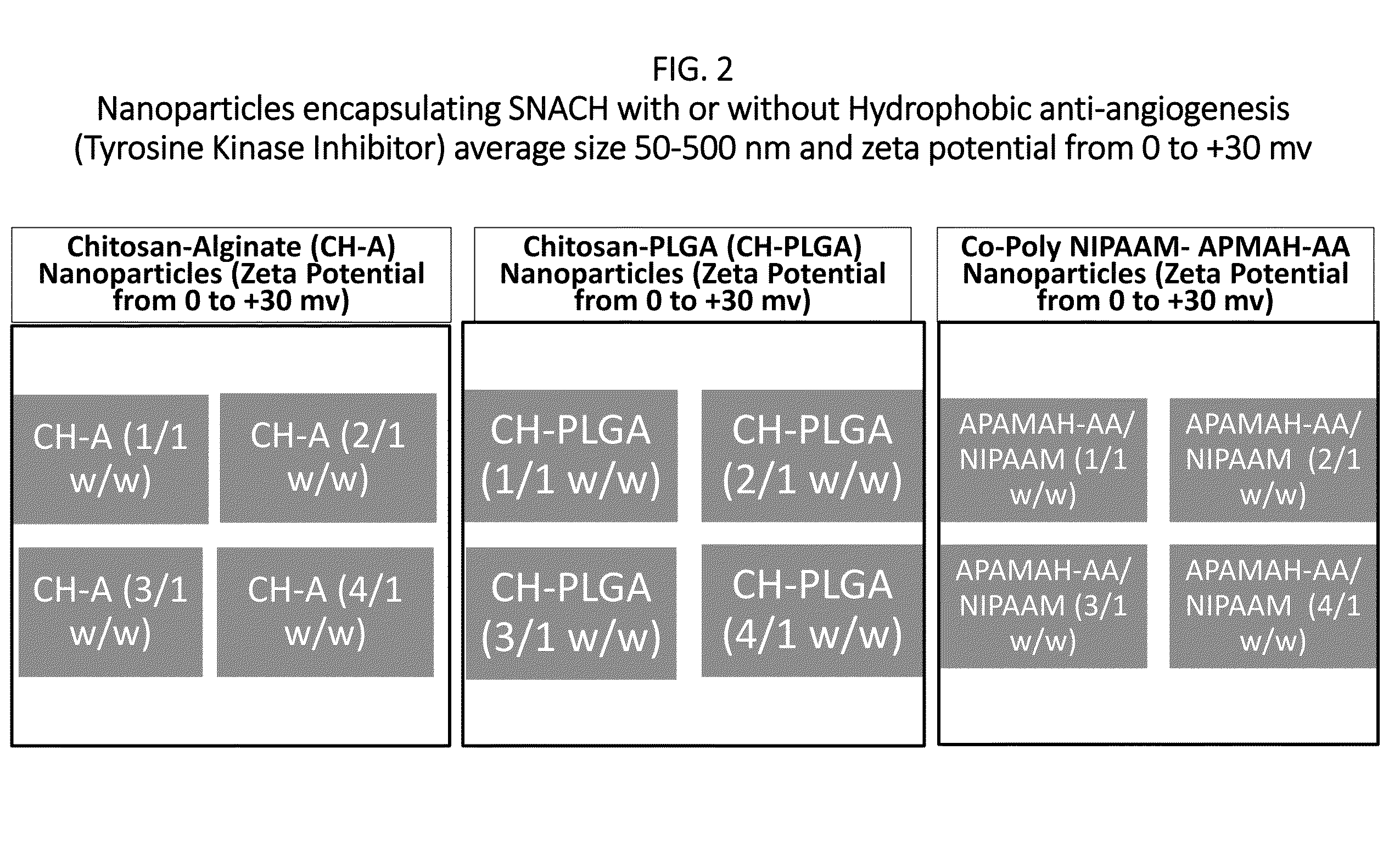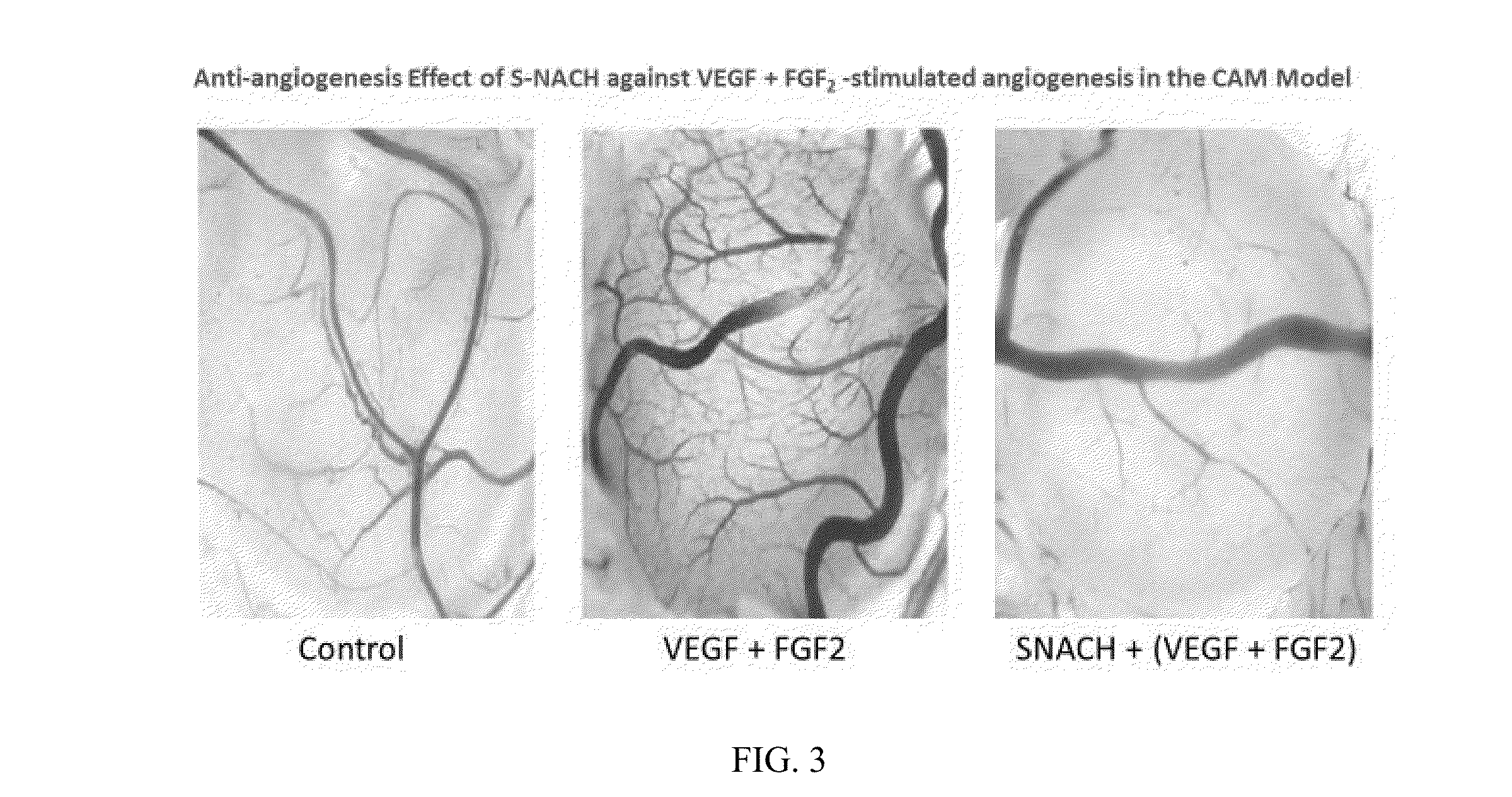Ocular nanoformulation and method of use in angiogenesis-mediated disorders
- Summary
- Abstract
- Description
- Claims
- Application Information
AI Technical Summary
Benefits of technology
Problems solved by technology
Method used
Image
Examples
example 1
Design of Nanoparticles Formulation
[0023]In initial experiments, three different ophthalmic formulations comprising nanoparticles based on different polymers are prepared. The efficacy of these nanoparticles with different variation of surface charge, size and mucoadhesiveness are examined. Sulfated non-anticoagulant heparin (SNACH) is encapsulated in each of three nanoparticles formulations. Definition: SNACH has a sulfate / carboxylate ratio in a range of greater than 2.4 / 1 to 3.5 / 1. The preceding sulfate / carboxylate ratio is a ratio of the number of sulfate groups to the number of carboxylate groups.
[0024]Poly(lactic-co-glycolic acid) (PLGA), chitosan and custom made co-polymeric nanoparticles with different ratio of N-isopropyl acrylamide, N-3-aminopropylmethacrylamide hydrochloride, and acrylic acid are synthesized for designing different nanoformulations for SNACH enhanced ocular kinetics. The present invention comprises two different options where the nanoparticles stay on the ...
example 2
Analysis of Nanoparticles
[0035]Based on the original method developed by PRI a modified HPLC analytical method specific for SNACH nanoparticles was developed. Development of analytical method for indirect quantitation of SNACH inside the nanoparticles is also on agenda. From a set, half of the total amount of the nanoparticles were disintegrated in 50% acetone and analyzed directly by HPLC for total amount of free and encapsulated SNACH. On the other hand, the other half of nanoparticles were filtered through a 100 KD centrifugal filter membrane device, and the filtrate were analyzed by HPLC for the total amount of free SNACH. Thus, the difference between the amounts of SNACH in the two analyses would represent the amount of SNACH inside the nanoparticles. The sample preparation protocol would have to be tested for each kind of nanoparticles, and adjusted accordingly.
example 3
[0036]To study the release kinetics, a known amount of the nanoparticles formulation encapsulating SNACH were suspended in desired medium in which the release kinetics are to be studied. The solution were distributed as 500 ul aliquots in micro-centrifuge tubes. At predetermined intervals of time the solutions were filtered through centrifugal filter membrane device (100 KD cut off) as indicated above to separate free SNACH from the loaded nanoparticles. The concentration of free SNACH were determined by HPLC. % Release=([SNACH]f, t) / ([SNACH]0)×100, wherein [SNACH]f,t is the concentration of SNACH in the filtrate at time t. [SNACH]0 is the total amount of the encapsulated SNACH.
PUM
| Property | Measurement | Unit |
|---|---|---|
| Diameter | aaaaa | aaaaa |
| Diameter | aaaaa | aaaaa |
| Zeta potential | aaaaa | aaaaa |
Abstract
Description
Claims
Application Information
 Login to View More
Login to View More - R&D
- Intellectual Property
- Life Sciences
- Materials
- Tech Scout
- Unparalleled Data Quality
- Higher Quality Content
- 60% Fewer Hallucinations
Browse by: Latest US Patents, China's latest patents, Technical Efficacy Thesaurus, Application Domain, Technology Topic, Popular Technical Reports.
© 2025 PatSnap. All rights reserved.Legal|Privacy policy|Modern Slavery Act Transparency Statement|Sitemap|About US| Contact US: help@patsnap.com



